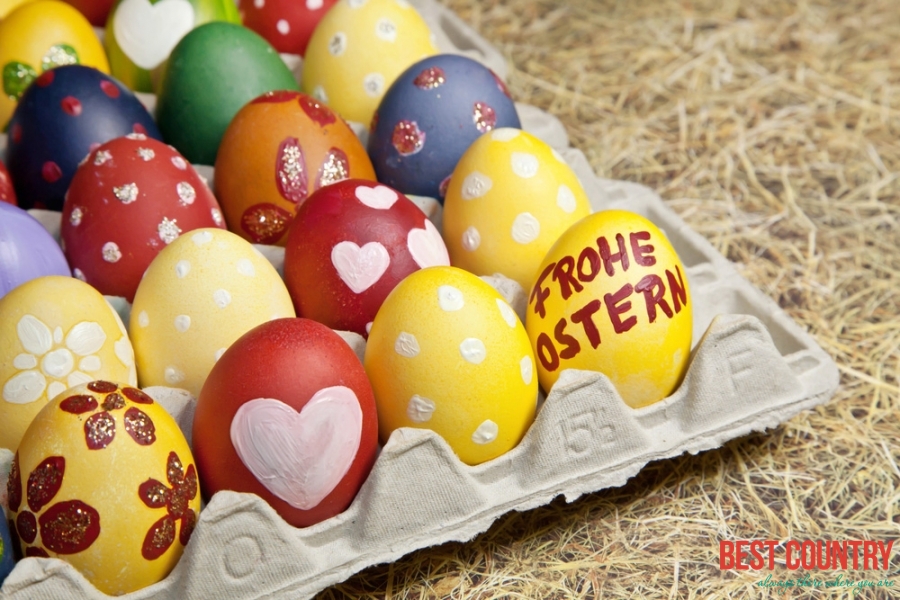Easter traditions in Germany

On the day of the festival, people greet each other Frohe Ostern, which means ‘Happy Easter’ in German. Easter holidays for children last for about three weeks. Good Friday, Easter Saturday and Easter Sunday are the days when people do not work at all. Green dishes are prepared on Maundy Thursday, one of them being the “seven herb soup” that contains spinach, parsley, leeks, chives, dandelion and sorrel. Good Friday dinner mainly consists of fish that is consumed among the family. Lamb forms the main dish on Easter as it represents innocence and humility.
A festive breakfast, lunch and dinner is prepared on Easter Sunday. The most popular treats include roasted lamb, lamb stew, fried, scrambled or boiled eggs; sweet bread loaves with frosting and candy eggs, chicks, eggs and lamb-shaped cookies and various salads. Huge bonfires are lit on Easter Saturday evenings. These Easter fires are burnt to symbolize the end of winter and bad omen. This is a very popular tradition and large numbers of people assemble to enjoy it.
Easter trees, known as Osterstrauch, have been a part of Easter celebrations in Germany for a long time now. Hollowed-out eggs are dyed and hung with colorful ribbons on these trees throughout the week of Easter. Easter baskets full with delicious assorted sweets, chocolates, handmade truffles, pralines, candies and brightly colored eggs are presented to children. Colorful Easter eggs made of chocolate, candy, plastic, fabric or wood are decorated with traditional designs and are exchanged amongst friends.